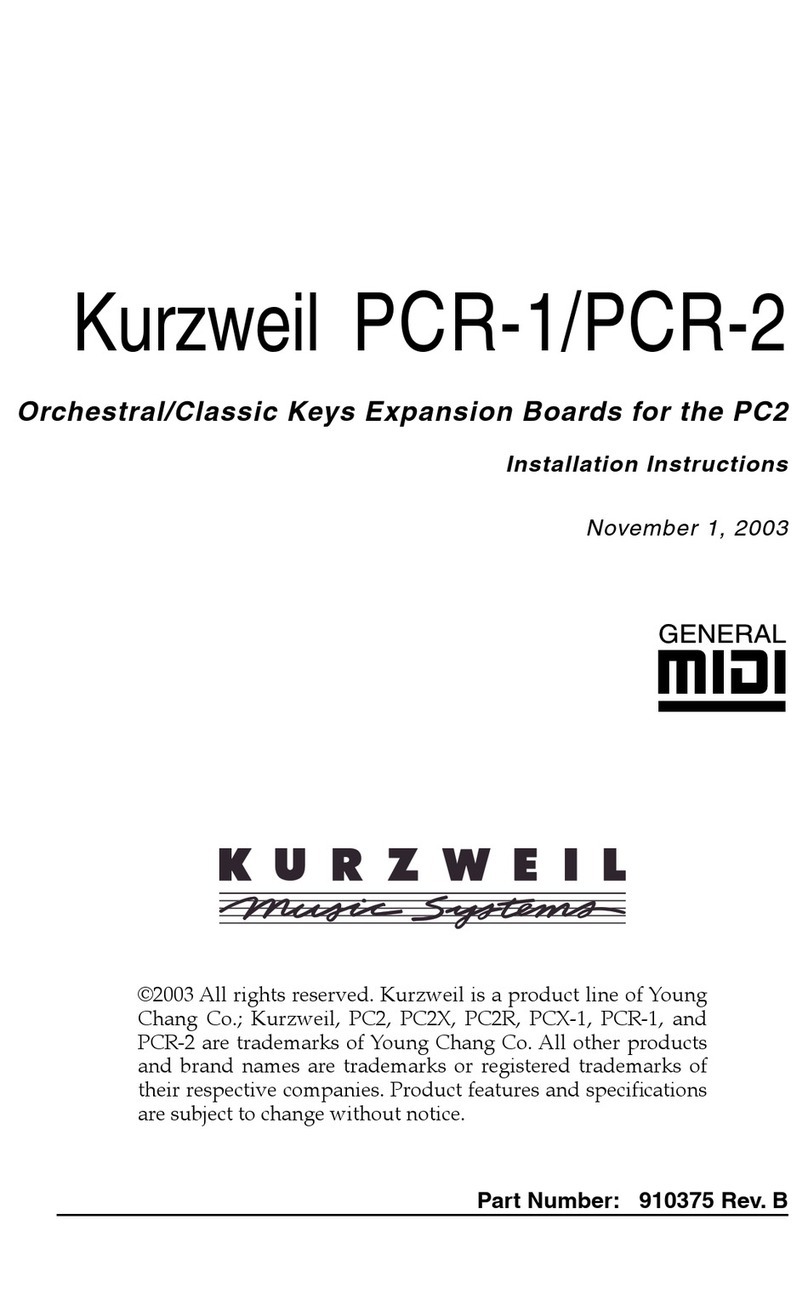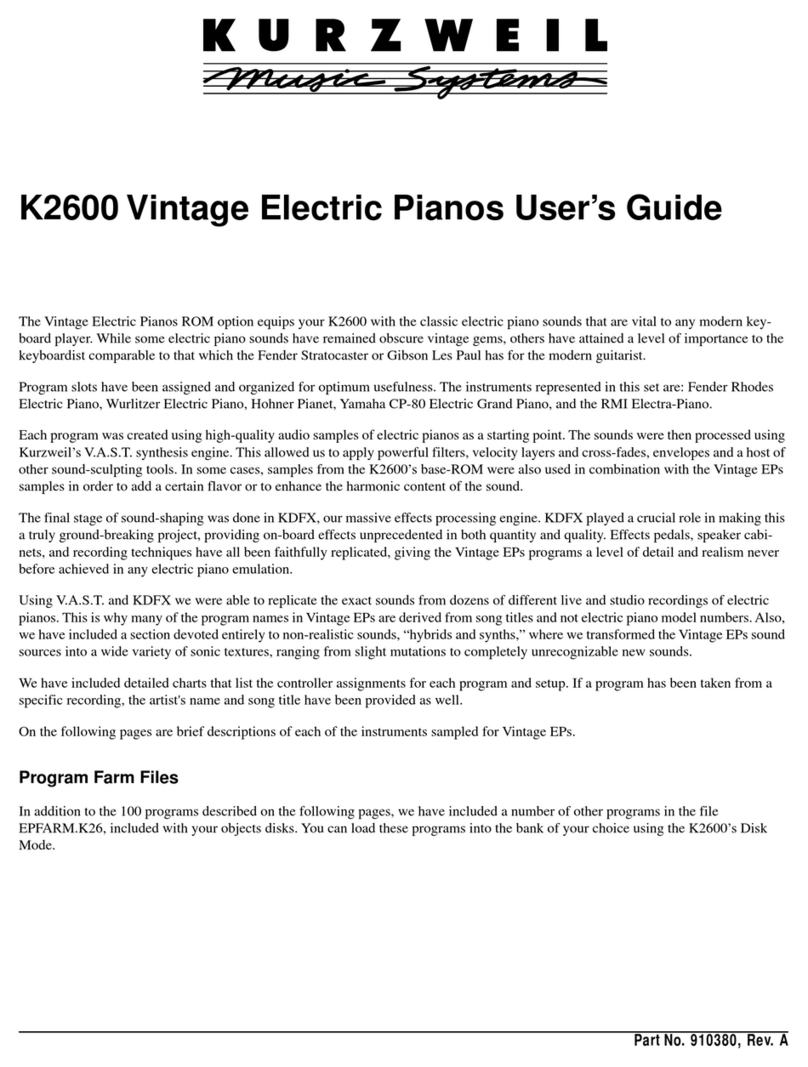
6
PC1x Classic Keys User’s Guide
Note: Hohner also manufactured the much more rare Electra-Piano (not to be confused with the RMI
Electra-Piano) which featured an enclosure resembling that of an upright piano. Reported to have a ham-
mer mechanism very much like the one found in the Rhodes, the Hohner Electra-Piano featured a built-in
amp and four speakers. Led Zeppelin made this sound famous, employing it in a number of hits. Using
our Pianet samples and bit of processing, we were able to craft some realistic imitations of the Hohner
Electra-Piano, and we’ve included them in the Pianet section of Classic Keys.
Yamaha CP-80
Known commonly as the “electric grand”, the CP-80 (88 notes), along with it’s smaller counterpart, the
CP-70 (76 notes), was the product of clever engineering combined with traditional piano-making crafts-
manship. Inside the CP-80, are the basic workings of a real acoustic piano, which have been altered to fit
into a smaller enclosure. On the outside, the CP-80 looks like a “grand” version of the Rhodes, covered in
tolex, with the top portion extending in the rear to accommodate the piano harp inside. Up until the mid-
1980’s, when sampled pianos became available, the CP-70/80 was the only instrument capable of provid-
ing a decent substitute for a real piano. While it served this purpose well, the CP-70/80 had some unique
features, which allowed it to have its own very distinct sound when desired.
With single strings on the lower notes, and double strings on the rest, the CP-70/80 included a modified
Yamaha grand piano action and employed piezo-electric transducers in lieu of pickups. The original CP
series featured bass and treble tone controls and a tremolo circuit. Later, seven bands of EQ, balanced
outputs and MIDI capabilities were added (CP-70/80B and M models). Often used with chorus and com-
pression effects, the CP-80 was known for having more “punch” than an acoustic piano. Production
began in 1977 and ended in 1987.
RMI Electra-Piano
Built by Rocky Mount Instruments, a division of the Allen Organ Company, from 1967-1980, the RMI
Electra-Piano is the one electric piano represented in Classic Keys, which did not produce sound by elec-
tro-mechanical means. With an electronic tone-generator for each note, un-weighted plastic keys, which
were not touch-sensitive, and a set of “stops” for sound selection, the RMI more closely resembled an
organ than anything else. Both sustain and volume pedals were included with the unit. Most were black
tolex-covered consoles with 61 (later 68) keys, and rested on a set of metal legs.
There were five stops on the RMI, which controlled the tone: Piano, Piano PP, Harpsi, Harpsi PP, and
Lute. There were two additional stops; Accenter, which added in an attack “thump” as well as Organ
Mode, which extended the decay of held notes.
Though not capable of producing a realistic piano sound, the RMI did provide a viable “electric harpsi-
chord/clavichord” tone. In addition, the overall sound of the RMI was warm, yet manageable, and lent
itself nicely to the use of effects processors and pedals. The RMI appeared on a variety of albums in the
early and mid seventies, and was featured prominently in the music of the progressive rock bands Genesis
and Yes.
































